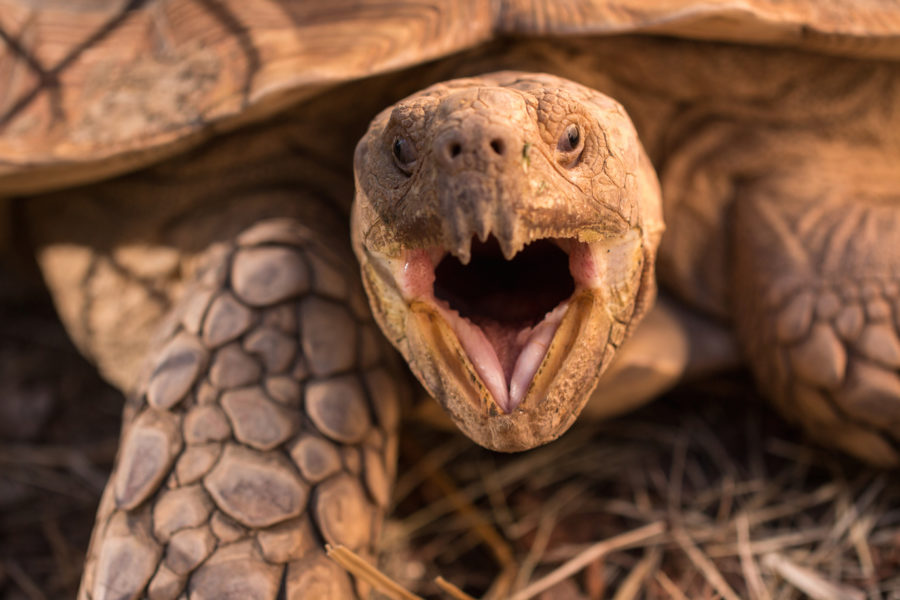I’m not lion about the Memphis Zoo
Memphis Zoo has great exhibits but there are still things to be done
The Memphis Zoo has come a long way since its founding in 1904 when people came together to house a black bear named Natch. Today, the zoo houses more than 3,500 animals and hosts around 500 different species.
The first stop everyone should go to is the Memphis Zoo’s newest exhibit the Zambezi River Hippo Camp. The zoo finally received the 22 million dollars worth of funds needed to create a magnificent habitat for the hippos to dwell in with an incredible underwater viewing area. The flamingoes in front of the camp add a colorful display. As you walk into the building, there are giant Nile crocodiles to your right. You are able to see these massive nine to 13 foot reptiles dive down into the water at the underwater viewing area.
“Look Mom, a hippopotamus,” a little boy said as I saw the hippo swimming towards us. “Did you know that hippos kill more people than sharks do per year?” I said back to him immaturely. I was given a hard glare from his parents, as well as my own mother. Whoops! Despite the fact that hippos aren’t as innocent as everyone makes them appear, you can definitely tell they are much happier in their new exhibit compared to their last one.
The next destination is the African hoofed animals exhibit. These exhibits are medium-sized, separated by fences. On the day I visited, most of the animals had retreated into the shade because in Memphis in October it’s 90 degrees outside, of course. While exploring these different exhibits, I overheard a grown man yell to his wife, “Look honey! There’s a dik dik!” A dik dik is a small antelope and, yes, they have a funny name.
Don’t forget to go pet the tortoises as well. You might find tortoises feasting on their meal of vegetables and lettuce. You could even get lucky enough to catch the attention of another tortoise and pet them!
Before leaving the zoo, make sure to walk through the doors of the Animals of the Night building that has a sign saying “NO FLASH PHOTOGRAPHY.” Outside of the zoo, most people do not typically get to see these animals, except maybe armadillos every once in a while splattered on the street or frolicking their practically blind selves into places they shouldn’t be…pray for them.
Although the zoo clearly has amazing exhibits, there are still some things that need to be improved.
The hippo exhibit’s water was full of grass and algae, making it look completely green and murky. Honestly, it was pretty gross. On the day I visited, viewers were having a hard time finding the massive creatures because the water was so dirty. Given that hippopotami are fairly dirty creatures, the water in the exhibit needs to be constantly filtered in order for viewers to be able to see them.
Another problem I saw was with the wolves.
In the wild, grey wolves live in temperatures that range from zero to 20 degrees Fahrenheit naturally. These caged wolves end up in the 100-degree heat during Memphian summers so they have to seek as much shade as they can when it’s that hot. I wish that the wolves’ exhibit was bigger and that the largest, open viewing area was not as high up. Don’t get me wrong, the exhibit is nice, but I think the wolves deserve a better one. If you don’t believe me, spend a little time around their exhibit and watch the crowd try to get them to howl. The smiles on the viewers’ faces are priceless.
It is a joy to live so close to The Memphis Zoo. It is directly connected to Memphian culture and how we interact with our environment. The zoo has drastically changed in the past year so make sure to go see the renovations if you have a chance.











Sarah knestrick • Nov 19, 2016 at 1:27 PM
Katelyn– I live animals– your pic reminded me of some of the wonderful creatures we have seen in our travels– very nice photos!! And did you write the article as well? I enjoyed it very much! The Memphis Zoo has come a long way since Fred and I used to take little Tony and baby Betsy there! We have a nice zoo in Nashville too– come visit!!